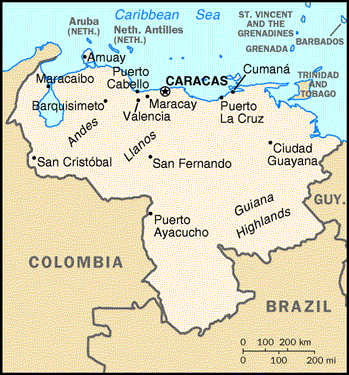

Status Quo Side: Government
Non-Status Quo Side: Terrorist groups
Region: Western Hemisphere
Conflict Type: External Intervention
Issues in Dispute: Governance
The election of moderate Romulo Betancourt as President in December 1958 to succeed deposed dictator Martos Perez Jiminez led to a 3-party coalition which excluded the Communist Party. The regime faced serious economic and political difficulties.
Young activists preached Cuban-style revolution at the September convention of Betancourt's Accion Democratica (AD) party. Many who were later expelled formed the Movement of the Revolutionary Left (MIR) and joined the Communist Party to plan revolution. The governing coalition weakened as some leftists resigned and rightist military conspiracies supported by dictator Rafael Leonidas Trujillo Molina of the Dominican Republic were exposed.
Students staged 8 days of violent protest over the arrest of 3 MIR editors who had called for "popular revolution." Frequent street violence was augmented after January 1962 by urban and rural terrorism perpetrated by Urban Tactical Units trained by Cuban guerrillas. By late 1962 a clandestine army (FALN) had taken leadership. Swelling insurgency culminated in November 1963 in two days of mass terror aimed at preventing scheduled December elections.
The voters gave a decisive majority to AD candidate Raul Leoni, plus control of both houses.
Guerrilla activity gradually subsided in ensuing years, particularly after the Communist Party in 1967 abandoned violence and participated in the December 1968 elections.
Twice-elected chief executive Carlos Andres Perez, who survived two attempted coups in 1992, in 1993 was removed by the Senate for alleged corruption and later convicted. Rafael Caldera Rodriguez, elected president in December 1993, instituted price controls to counter inflation and faced street riots. The economy turned sour in 1993 but the Caldera government survived.